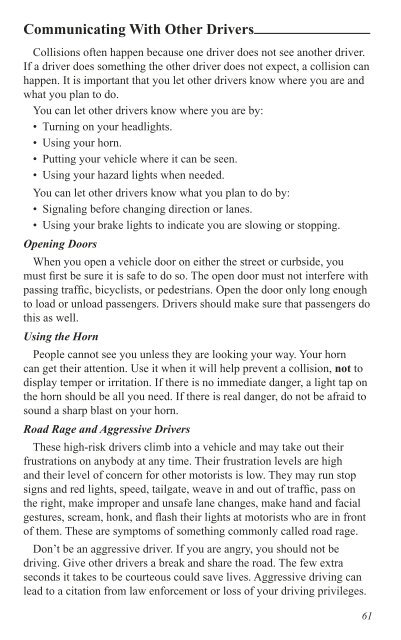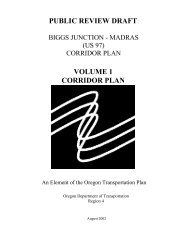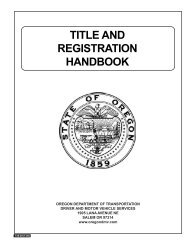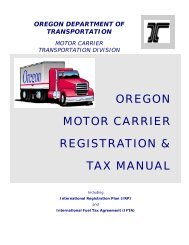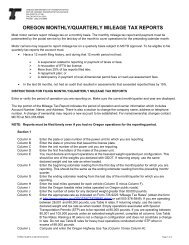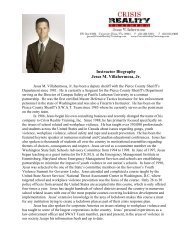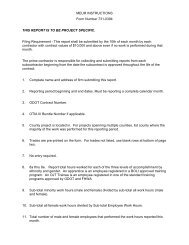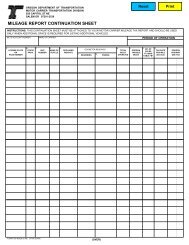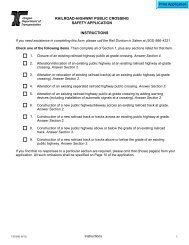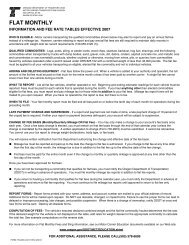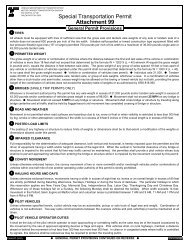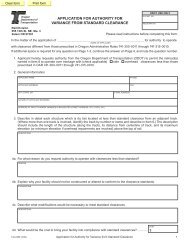2013 Oregon Driver Manual - Oregon Department of Transportation
2013 Oregon Driver Manual - Oregon Department of Transportation
2013 Oregon Driver Manual - Oregon Department of Transportation
Create successful ePaper yourself
Turn your PDF publications into a flip-book with our unique Google optimized e-Paper software.
Communicating With Other <strong>Driver</strong>s<br />
Collisions <strong>of</strong>ten happen because one driver does not see another driver.<br />
If a driver does something the other driver does not expect, a collision can<br />
happen. It is important that you let other drivers know where you are and<br />
what you plan to do.<br />
You can let other drivers know where you are by:<br />
• Turning on your headlights.<br />
• Using your horn.<br />
• Putting your vehicle where it can be seen.<br />
• Using your hazard lights when needed.<br />
You can let other drivers know what you plan to do by:<br />
• Signaling before changing direction or lanes.<br />
• Using your brake lights to indicate you are slowing or stopping.<br />
Opening Doors<br />
When you open a vehicle door on either the street or curbside, you<br />
must fi rst be sure it is safe to do so. The open door must not interfere with<br />
passing traffi c, bicyclists, or pedestrians. Open the door only long enough<br />
to load or unload passengers. <strong>Driver</strong>s should make sure that passengers do<br />
this as well.<br />
Using the Horn<br />
People cannot see you unless they are looking your way. Your horn<br />
can get their attention. Use it when it will help prevent a collision, not to<br />
display temper or irritation. If there is no immediate danger, a light tap on<br />
the horn should be all you need. If there is real danger, do not be afraid to<br />
sound a sharp blast on your horn.<br />
Road Rage and Aggressive <strong>Driver</strong>s<br />
These high-risk drivers climb into a vehicle and may take out their<br />
frustrations on anybody at any time. Their frustration levels are high<br />
and their level <strong>of</strong> concern for other motorists is low. They may run stop<br />
signs and red lights, speed, tailgate, weave in and out <strong>of</strong> traffi c, pass on<br />
the right, make improper and unsafe lane changes, make hand and facial<br />
gestures, scream, honk, and fl ash their lights at motorists who are in front<br />
<strong>of</strong> them. These are symptoms <strong>of</strong> something commonly called road rage.<br />
Don’t be an aggressive driver. If you are angry, you should not be<br />
driving. Give other drivers a break and share the road. The few extra<br />
seconds it takes to be courteous could save lives. Aggressive driving can<br />
lead to a citation from law enforcement or loss <strong>of</strong> your driving privileges.<br />
61


